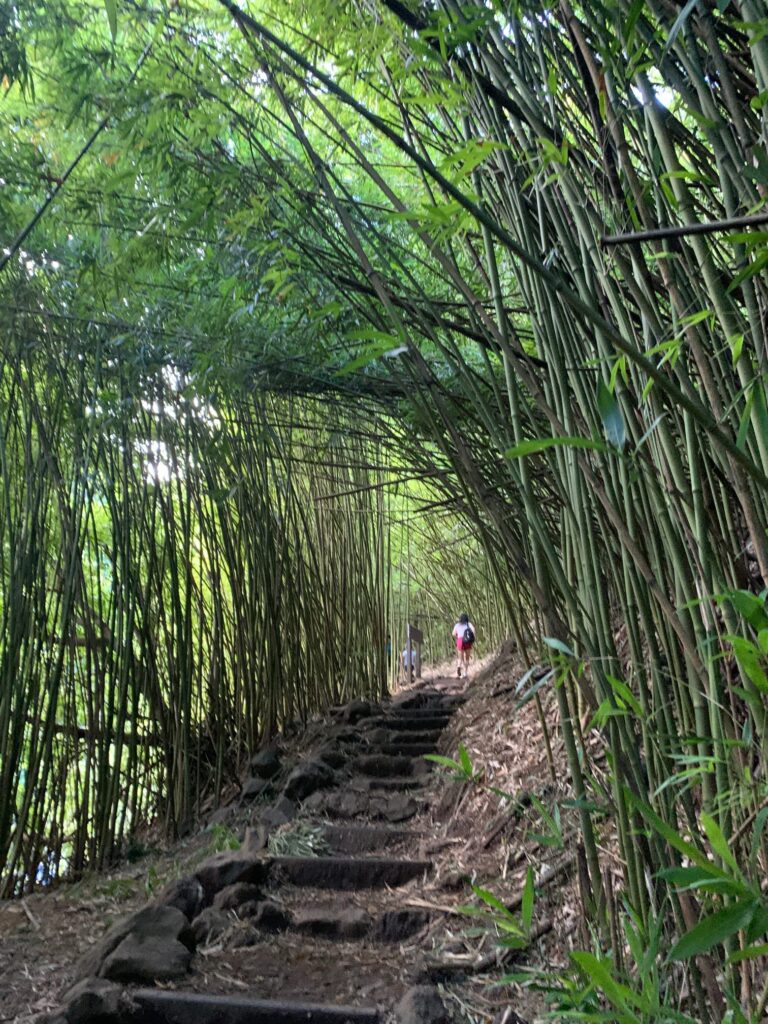Aloha, Maui travelers!
During my recent Hawaiian vacation, I embarked on one of Maui’s most famous journeys – the road to Hana.
It’s a stunning drive with some incredible lookout points, black sand beaches, and hidden coves. But, like many, I experienced the downside of the 600-plus turns and winding roads: Road to Hana motion sickness.
I’ve gotten car sick my entire life, and can barely stand on a docked boat without feely queazy.
So I was understandably nervous before the drive, even though I had some car sickness meds with me (more on that below).
But though a combination of planning, over-the-counter medication, the right vehicle choice, and choosing the right time of day, I was able to minimize discomfort and fully embrace the beauty of Maui’s road to Hana without getting car sick.
In this guide, I’ll share my experience so you too have the best chance for a smooth ride on the Road to Hana!
Prepare Ahead
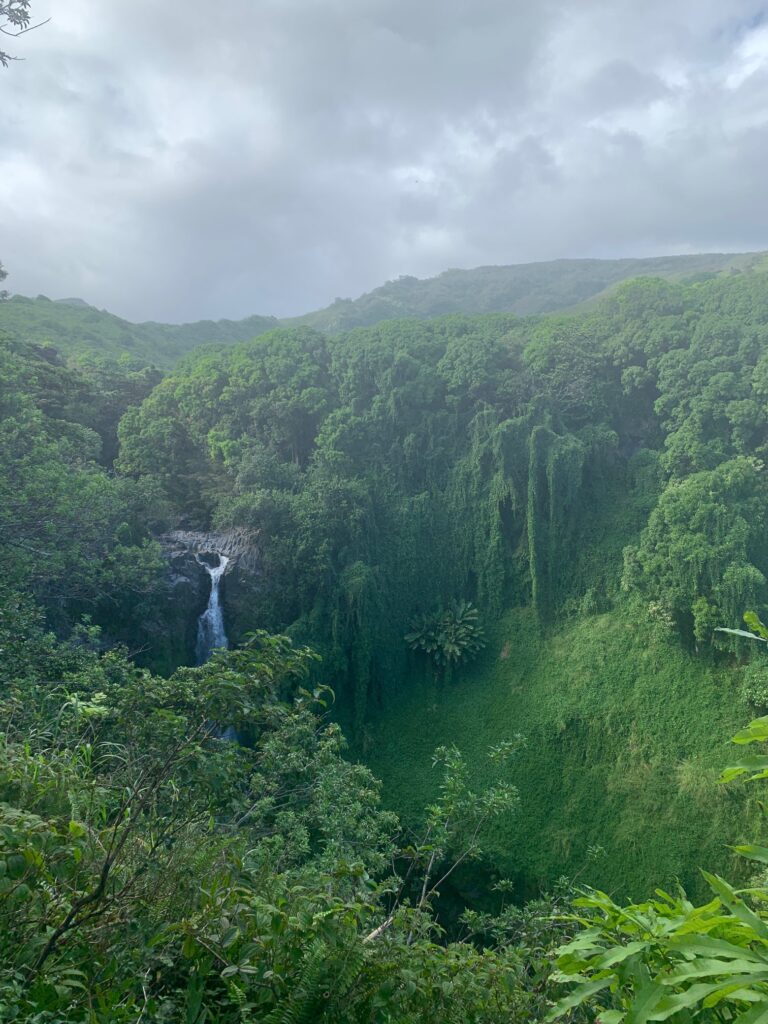
Eat before you go
Traveling on an empty stomach has always made my motion sickness worse.
For this reason, I decided to stop and eat a light breakfast in Paia town, which is the last “real civilization” before you start the Road to Hana.
If you’re the same, definitely don’t skip breakfast — it can make a world of difference.
It’s also worth noting that sleep deprivation can make symptoms worse, so be sure to get a good night sleep the night before you leave.
Snacks and drinks
I also brought plenty of water to stay hydrated and some ginger sucking candies.
Protip: Even if you’re in a car with AC, the sun will still bake you through the windows, so it’s important to stay as hydrated as possible. Also consider applying sunscreen before your start the drive.
Medication
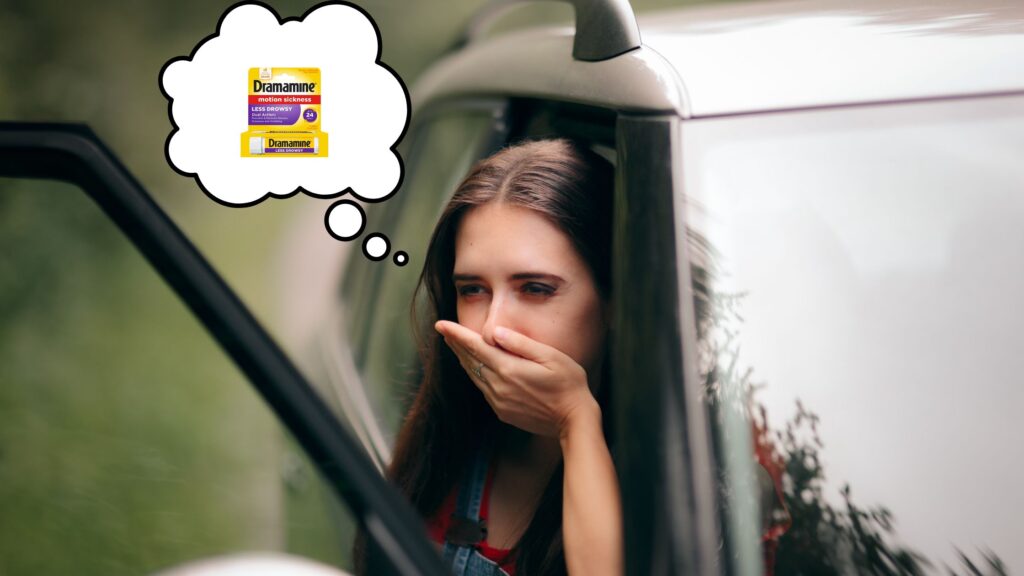
Knowing that I’ve historically suffered from motion sickness, I moved beyond “best practices” and actually get some drugs that could help.
This is so common, that many of the small shops in Paia town (right before the Road to Hana begins) actually sell Dramamine and related over the counter nausea medications!
I personally ordered both Dramamine and Bonine from Amazon prior to my trip so I didn’t have to overpay at the tourist traps. And boy I’m glad I did.
I personally took 2 Dramamine tablets before we left, and that seemed to do the trick for me.
I still felt a little motion sickness, but it was much less than it would have been.
The next level of medication
If you’re really worried, you could also speak to your doctor about a prescription Scopolamine patch.
This is a medicated patch with stronger meds that you stick behind your ear to absorb through the skin. I’ve previously used these for helicopter tours and boat rides and they also have worked for me.
It’s important to note that some medications may cause drowsiness, so it’s best to try them before your trip to see how they affect you. Also, the obligatory disclaimer that I am not a medical professional, and I am only providing general information and my personal experience. This is not medical advice, and you should speak to your own doctor with any questions or concerns about using medication for your motion sickness or any other purpose.
Pick Your Ride Wisely
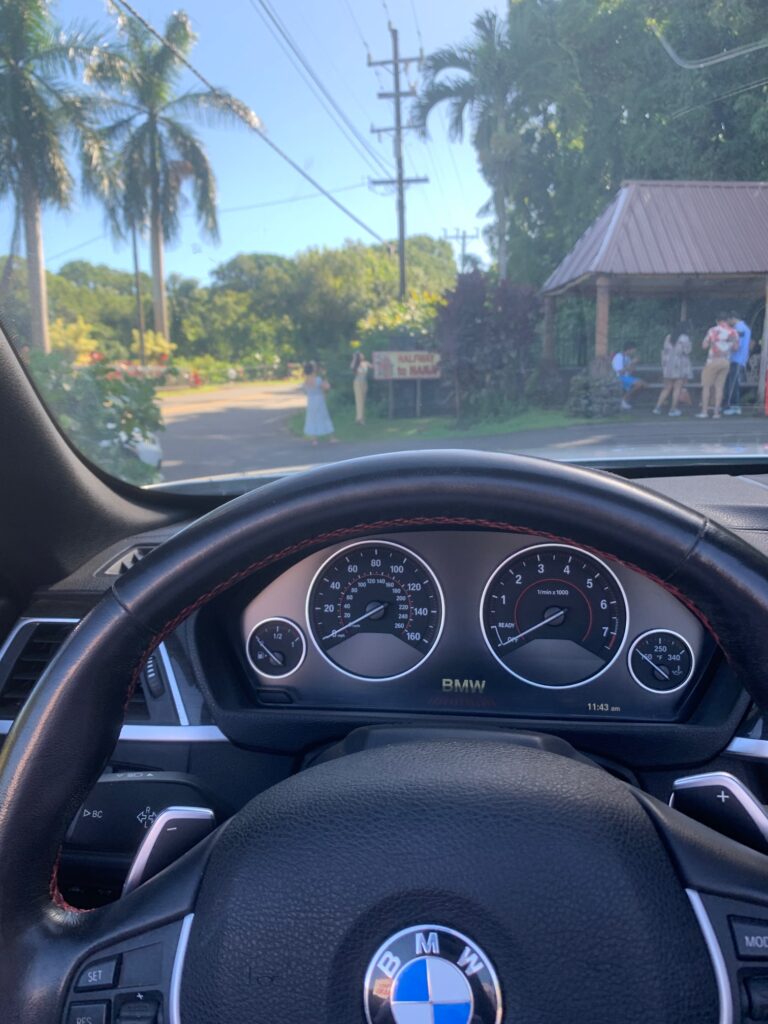
Don’t underestimate the impact your vehicle choice can have on your trip.
On Maui, we decided to rent a BMW 4-series convertible with a retractable hard top and a smooth suspension.
Having the wind in my hair/face while I was driving helped reduce my feelings of motion sickness.
And the smaller size of the car combined with the light steering, made handling the winding road easier than heavier vehicles like the Mustang or Jeep we rented on the other Hawaiian Islands.
The open-air setting really does allow for better ventilation which can help reduce nausea, so don’t under think this.
One final note on vehicle selection: I know some people consider taking bus tours on the Road to Hana. I would not recommend this if you get car sick.
It’s bad enough sitting in the front of a car, or driving.
Once you get stuck in a back seat, cramped with other passengers, you probably won’t have a good time.
There are many stories of tour groups having to turn around because some passengers get so motion sick.
Take Regular Breaks
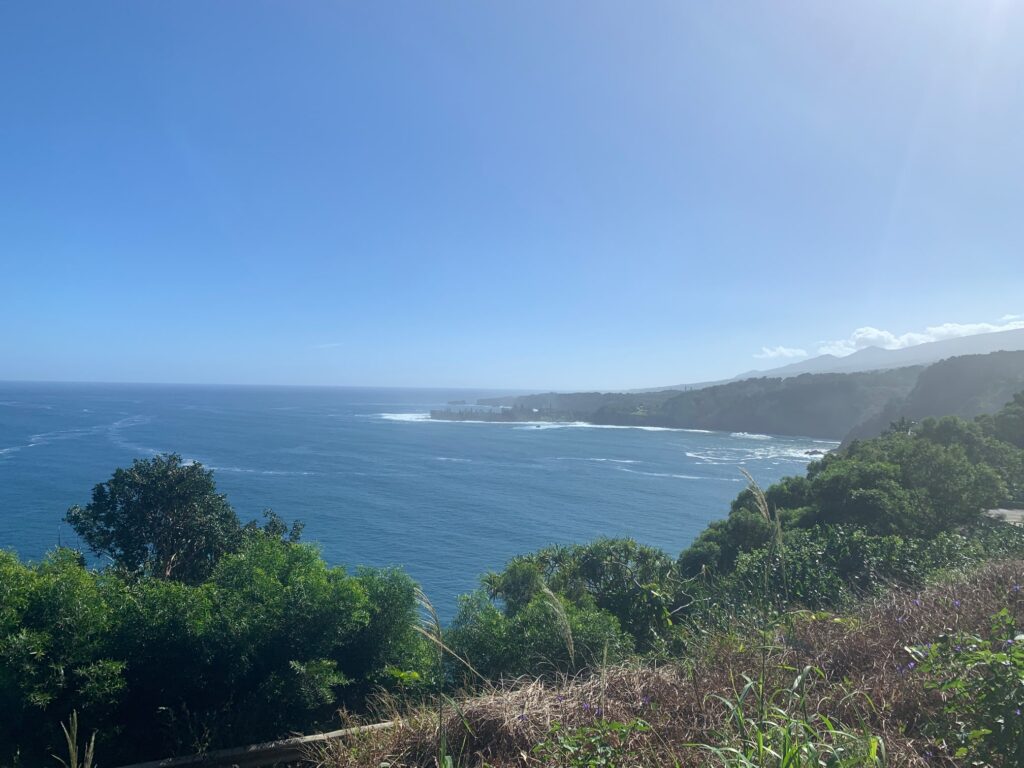
Stopping frequently at the famous lookout points and attractions along the way was a game-changer.
Even just a few minutes to walk around, get your bearings, and breathe in the ocean air will gave you a chance to recover from nausea.
Along the road to Hana, there are a number of stops like Waianapanapa State Park’s black sand beach, several lookout points, a famous Halfway to Hana Banana Bread stand, some ice cream shops, and the Ke’anae Arboretum.
Stay in Control
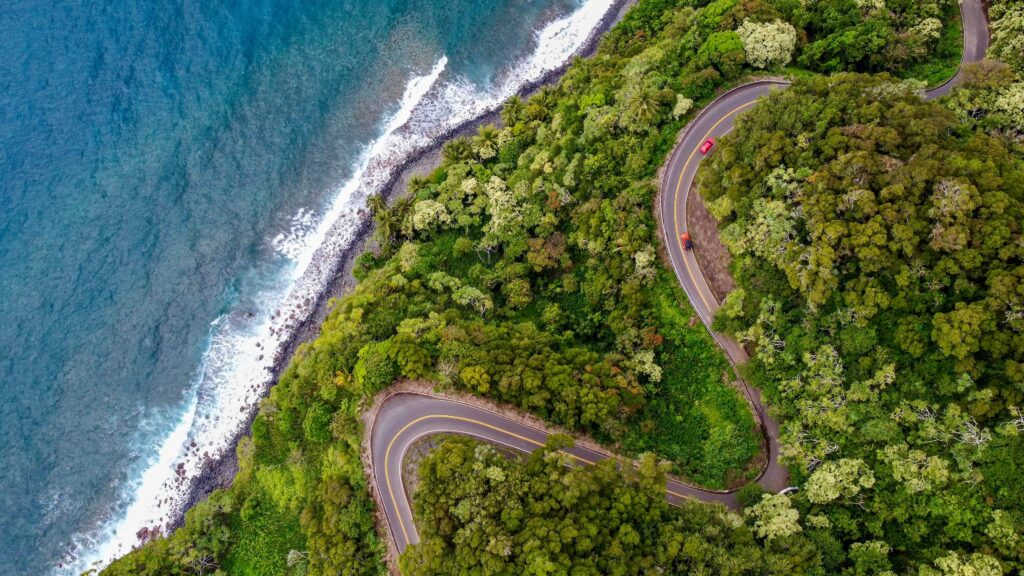
As the driver, I was in control of the car and could adjust my speed according to my comfort level.
You can also anticipate exactly when the car is going to move or brake, which makes a big difference to those prone to car sickness.
I made a conscious effort to drive smoothly, anticipating turns, and gradually accelerating or decelerating to minimize sudden jerks. If you’re prone to motion sickness, you should either be the driver (if you feel it’s safe) or at the very least, the front seat passenger.
You do not want to be a motion sickness-prone individual sitting in the back seat on the Road to Hana. You will not have a good time.
And as always, all the regular motion sickness tips apply: don’t try to read or use your phone, try to look ahead to the horizon, etc.
Keep your mind somewhere else
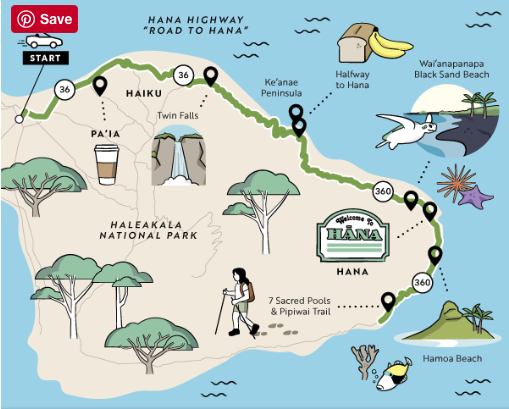
One thing that also helped, was being able to listen to all the information and stories that virtual Shaka Guide app told us along the way.
Basically, there’s no cell service or reception for GPS on most of the road to Hana, so it’s recommended to get a paid app that guides you along the way, points out different stops, and tells you the history of Hana and the island.
There are a few different apps available from different companies, but the one I bought was Shaka Guide since it came highly recommended on some Reddit threads I read. You just download the app and pay around $20 and then have full access.
Being able to focus on the information and stories was a good way to keep my mind off feelings of motion sickness (which can be exacerbated by worrying about motion sickness).
If you’re about to start your Road to Hana trip, you can get the app here.
Conclusion
Despite the challenge of my motion sickness, I had a good time on our Road to Hana day trip.
By preparing ahead with meds and snacks, choosing an open air vehicle, taking regular breaks, and maintaining control, I was able to minimize dizziness and enjoy the breathtaking journey.
I hope my guide helps you too, making your road to Hana adventure an unforgettable experience.
And even if you decide that the Road to Hana is not worth it for you, don’t worry. There are a million other incredible views on Maui, so don’t feel like you’re missing out on too much.
You’re in Hawaii: you’ll have a good time no matter where you are!
FAQs
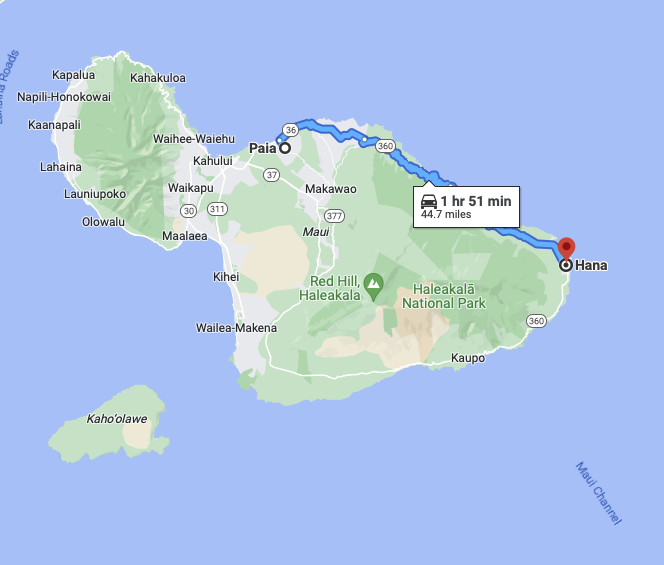
Q: When is the best time to drive the road to Hana?
A: To avoid motion sickness, I’d recommend you go early in the morning to avoid other traffic. Less traffic = less stop & go motion = smoother ride.
Q: Can I complete the road to Hana in one day?
A: Yes, it’s possible. However, it’s best to start early and be prepared for a long day, especially if you plan on taking regular breaks. If you have the luxury of time, consider spending a night in Hana or the surrounding areas, allowing you to explore more and enjoy a more relaxed pace.
Q: Are there restrooms available along the road to Hana?
A: Restrooms can be found at some lookout points, state parks, and recreational areas, such as the Pua’a Ka’a State Wayside Park and the Waianapanapa State Park.
However, facilities might not be available everywhere. It’s best to use the restroom when you find one and be prepared with tissues and hand sanitizer.
It’s also worth noting that if there is severe weather, some parks and entrances may be closed. You can usually look up the locations the day of your trip to see.
Q: Is the road to Hana safe?
A: There’s risk involved with any driving or transportation, especially on narrow windy roads need ocean cliffs. The general thinking is that the road to Hana is safe if you drive cautiously, follow speed limits, and adhere to road signs, but there are no guarantees in life.
Be prepared for narrow roads and one-lane bridges, but don’t let this discourage you – just be alert and drive safely.
Q: What should I pack for the road to Hana trip?
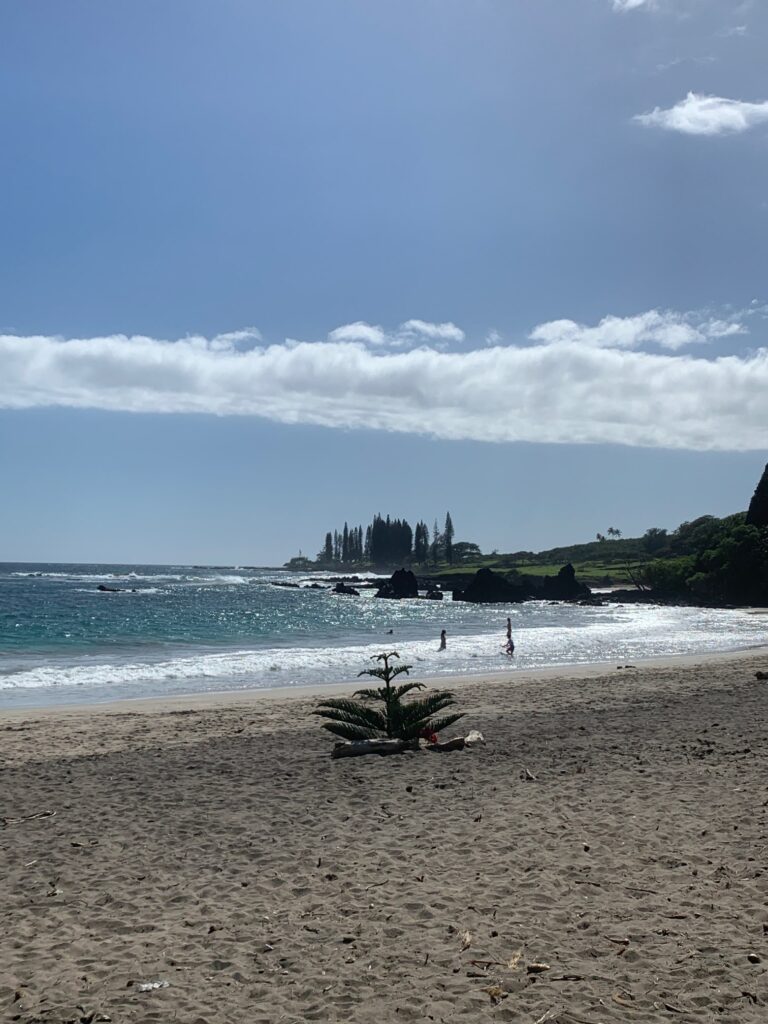
A: Some essentials include comfortable clothes and footwear, a hat, sunscreen, sunglasses, water, snacks, motion sickness medication, and a fully charged phone or camera for capturing the stunning views. You should also consider an offline GPS enabled tour app like Shaka Guide since the cell service is mostly non-existent on the ride.
The weather can also be a bit unpredictable in Hawaii, so if you have a rain jacket or umbrella, it may be worth bringing along.
